News
Making the Most Heartwarming Map in the World─Interview with WheeLog CEO Oda Yuriko Updated in June 2021
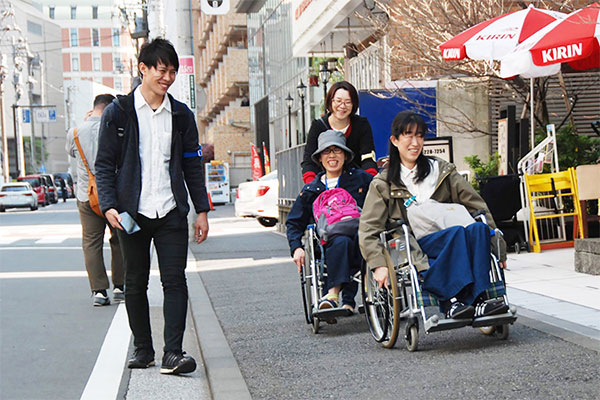
The ‘STI for SDGs’ Award is JST’s framework to recognize remarkable local attempts in resolving social issues through science, technology, and innovation (STI). JST created this award to achieve sustainable development goals (SDGs) by encouraging horizontal expansion to other regions. For the second round of this competition in FY2020, the team behind the smartphone map app "WheeLog!" won the MEXT (Ministry of Education, Culture, Sports, Science and Technology) Minister’s Award. Wheelchair users can use this app to add and share information on a map—things they noticed while visiting local facilities or moving around cities. We interviewed Oda Yuriko, the app’s creator and CEO of WheeLog (a general incorporated association in Chiyoda-ku, Tokyo) about the development process, the current state of barrier-free access in Japan, and her organization’s future goals.
70 Percent of App Users Are Non-disabled
"There is a long slope angled at about 15 degrees, please be careful," "the hotel has an accessible room," "the restaurant has wheelchair seating, and the staff is accustomed to handling wheelchairs." Once you click the icon on the map displayed through the WheeLog! app, comments and photos from various locations will be displayed on your smartphone screen. Interestingly, it is not just wheelchair users who are commenting. In fact, 70% of app users are able-bodied people who do not use wheelchairs. Since the comments also show the writer’s physical condition, readers can interpret the information in light of their own physical condition.
Ms. Oda says, "I feel that there are many people who are happy to give a hand if it will help others." , This friendly map, created by the cooperation of many people, further utilizes the GPS function to record the actual route taken by the wheelchair as a “travel log.” The app’s public forum function allows users to interact with each other. Moreover, visualization of barriers provides an opportunity to further improve the cities.
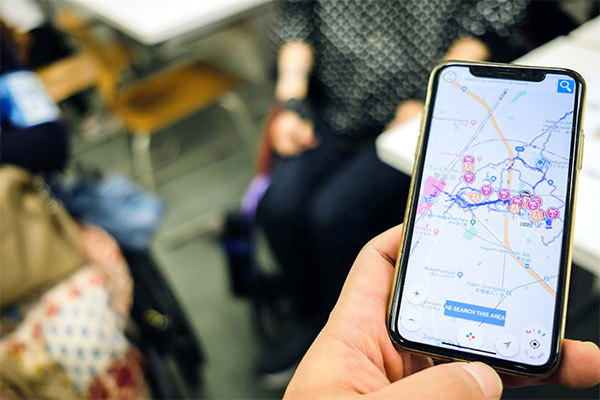
Accessibility Information Expands World for Wheelchair Users
Around the age of 20, Ms. Oda started to feel physical changes, like stumbling easily. Two years later, in 2002, she was diagnosed with distal myopathy. This is a rare disease where muscles in limbs situated far from the body core become atrophied, which afflicts several hundred people in Japan. "I won’t be able to go anywhere," she thought. She became a wheelchair user and tended to stay in. But after giving birth in 2006, she wanted to be able to go out more with her child.
One day, she saw an internet post by a wheelchair user who traveled to the beach resort in Oarai, a barrier-free area, and enjoyed family time there. When Ms. Oda read this, she thought she too would be able to go to a seaside with her child. Then, using the information, she found a place that suited her body condition and enjoyed a day with her child at the beach. With barrier-free accessibility information, wheelchair users can also go out and their world will change—she was convinced.
Based on this experience, the first thing Ms. Oda started was her YouTube channel "Wheelchair Walker". In this, Ms. Oda shows viewers firststand that people in wheelchairs can also enjoy traveling in Japan and abroad. The channel currently has over 10,000 subscribers, and while she felt a positive response from her audience, she wanted more than to spread information in outgoing one-way videos—she hoped for a more interactive exchange. To seek advice, she contacted Associate Professor Fumihito Ito at Shimane University who studies support for people with disabilities. They were acquainted through research group meetings at the Ministry of Health, Labor and Welfare.
Every user should be able to share information, post photos including latitude and longitude information, and post comments—The pilot version of WheeLog was developed based on Ms. Oda’s idea to which Assoc. Prof. Ito set the specifications. This was also the period in Japan when the restaurant information-sharing app "Tabelog" became popular. Ms. Oda’s idea was to create a platform that could share various facts about and awareness of cities by utilizing the power of digital tools. Development of the application took place with the cooperation from specialists in the field.
“Let’s try applying for the Google Impact Challenge," came the suggestion from Assoc. Prof. Ito. The "Google Impact Challenge'' is a competition that seeks to solve social problems using various technologies. At the time, specifications for the WheeLog app were just about finalized, but it would cost tens of millions of yen to actually bring it to fruition. The team won the Grand Prix in 2015 and was then able to raise the cost for development. "The judges felt the potential in us, even though we had no track record." Thus, the path to making the app a reality was paved.
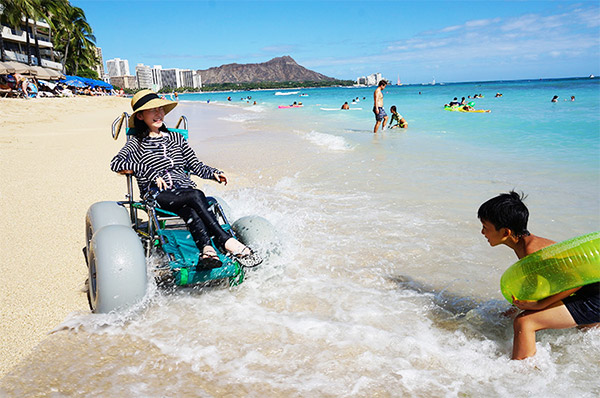
To Be a More Convenient App
At present, 38,000 locations are covered worldwide on WheeLog, and the app’s travel log has reached 7,500 kilometers. However, Ms. Oda and her team’s drive to make it more user-friendly is inexhaustible. New ideas come up one after the other—to make the app multilingual, or to prepare a web version that can be used with a mouse rather than limiting access to smartphone apps which can be complicated for people with limited hand mobility. Accordingly, such ideas require R&D funds. In order to cope with this, the organization is also devising ways to utilize crowdfunding and to enter into domestic and overseas competitions to win awards. WheeLog has also come up with plans to find sponsors and to solicit small donations so that it can continue with what it has now.
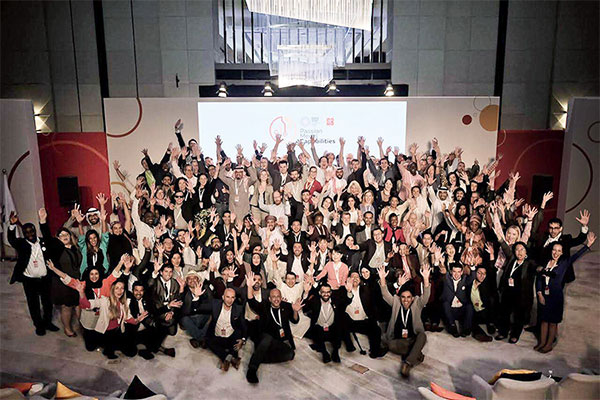
Along with updates, the team is also working to make the app more popular and to accumulate more information. One such attempt is the city-walk event. Under Covid-19 restrictions, the organization limits the number of participants to just a few people. According to Ms. Oda, these events provide opportunities to “test-drive and play with wheelchairs.”
The idea of playing with a wheelchair may sound improper, but there are many able-bodied people who have wanted to try navigating in wheelchairs. By having participants personally experience mobility in a wheelchair, WheeLog can expand its circle of friends and supporters. By venturing out into the city in a wheelchair, you become aware that an unnoticeable step only a few centimeters high can become a barrier. You will learn how to look at a city from a completely different perspective.
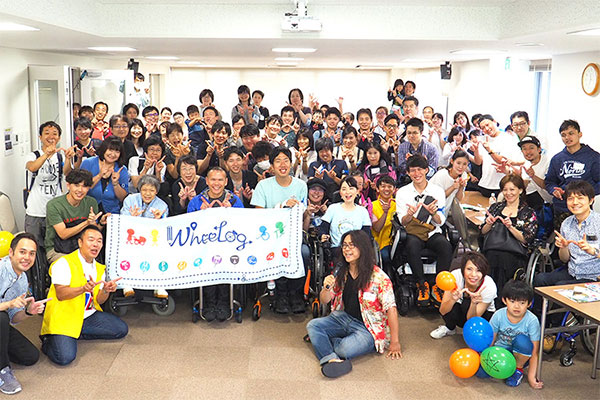
Visualization May Change Cities
Recently, local governments in Japan have begun collecting accessibility information—for instance, on toilets in the city—and making that information freely available to the general public. While there is usable data for the WheeLog app, Ms. Oda, an actual wheelchair user herself, often thinks that it would be more helpful if there were additional information. Having a photo of the specific spot is very important, for instance. By actually looking at the pictures, you can make a concrete judgment on whether you can use the facility or not. She wants to collaborate with local governments that are forward-looking about barrier-free accessibility, and to create a form in which each and everyone can help as much as they can.
Through the development of this app, Ms. Oda has also noticed a few things. Some facilities are trying very hard to adopt barrier-free accessibility but may not be good at public relations. Despite their efforts, there have been noticeable complaints that those facilities are simply not easy to use. “I hope that the WheeLog app can help evaluate those who are working hard to enable better accessibility,” says Ms. Oda. She also hopes that tourist sites highly evaluated by wheelchair users will have an influence over the accessibility of sites in other regions.
"I thought that accessibility would improve more with apps like WheeLog, but things aren’t that easy,” Ms. Oda added. There are cases where the effectiveness of barrier-free can be demonstrated by national and local governments setting rules on what form of barrier-free is best.
Braille blocks, for example, are important for the visually impaired, but can be an obstacle for wheelchair and stroller users, depending on how they are placed. By arranging the blocks with a little space between them, one can move the tires of wheelchairs and strollers without hitting the blocks. Rather than just creating a situation where only one side is convenient, you should think about how to make things comfortable for many people without stopping to think. Making rules according to necessity will allow more progress in barrier-free accessibility.
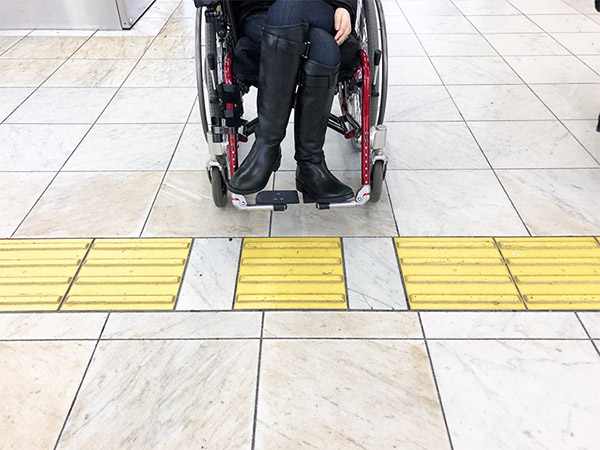
The current app helps people in wheelchairs to go about with peace of mind. The next step is to smoothly provide information in times of emergency so people with disabilities can continue to live safely. When a major earthquake strikes, for instance, wheelchair users have to know where evacuation shelters are, what kind of state they are in, and if it’s really OK for them to go there when each person's physical situation is different. Ms. Oda says she wants WheeLog to be able to provide such information. Thus, the WheeLog app keeps evolving.
Cities change over time, and it is necessary to change the map in the app accordingly. On the other hand, if the app successfully promotes "visualization", it may be possible to change the city itself in a direction that encourages barrier-free accessibility. This flexibility is possible because the map is not 100% perfect from the beginning. WheeLog is a map where people "post information together." Each user can refer to or disregard the posted information at will. "There are many kind people all over the world," says Ms. Oda. She also hopes that the "most heart-warming map in the world", made better by user collaboration, will trigger the birth of other new support tools.
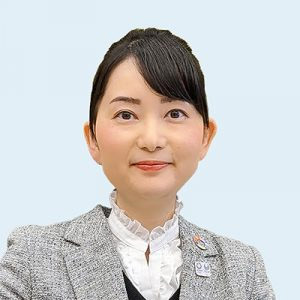
Oda Yuriko
Representative of General Incorporated Association WheeLog (CEO)
She developed distal myopathy around 2000 and was diagnosed in 2002. She invented the WheeLog! app to collect necessary information and to create functional specifications from the perspective of wheelchair users. She is also the representative of NPO PADM (Patients Association for Distal Myopathies), the representative of Wheelchair Walkers, and a judge for Her Abilities Award.








